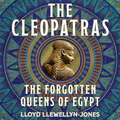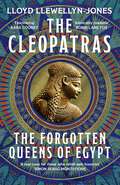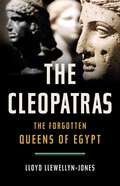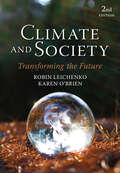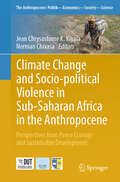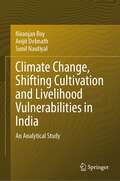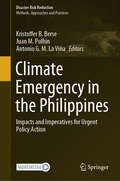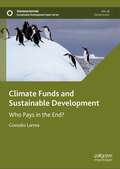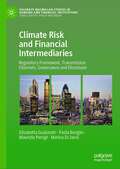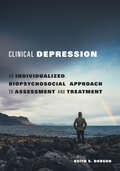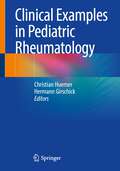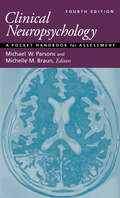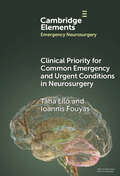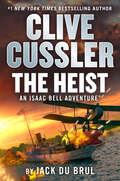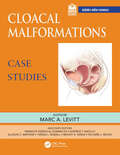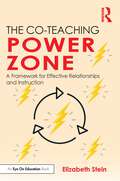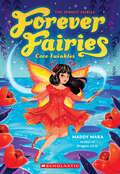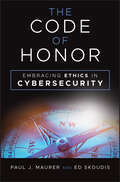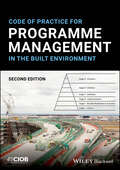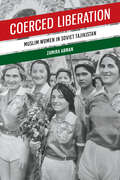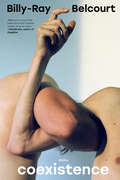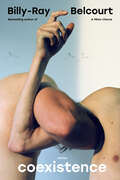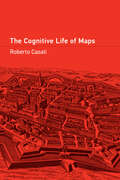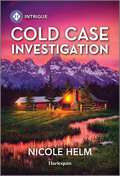- Table View
- List View
The Cleopatras
by Professor Lloyd Llewellyn-Jones'A thrilling biography, filled with the imperial ambitions and merciless intrigues' SIMON SEBAG MONTEFIORECleopatra: lover, seductress, and Egypt's greatest queen.A woman more myth than history, immortalized in poetry, drama, music, art, and film.She captivated Julius Caesar and Marc Antony, the two greatest Romans of the day, and died in a blaze of glory, with an asp clasped to her breast - or so the legend tells us.But the real-life story of the historical Cleopatra VII is even more compelling. She was the last of seven Cleopatras who ruled Egypt before it was subsumed into the Roman Empire. The seven Cleopatras were the powerhouses of the Ptolemaic Dynasty, the Macedonian family who ruled Egypt after Alexander the Great. Emulating the practices of the gods, the Cleopatras married their full-blood brothers and dominated the normally patriarchal world of politics and warfare. These extraordinary women keep a close grip on power in the wealthiest country of the ancient world.Each of the seven Cleopatras wielded absolute power. Their ruthless, single-minded, focus on dominance - generation after generation - resulted in extraordinary acts of betrayal, violence, and murder in the most malfunctional dynasty in history. Professor Lloyd Llewellyn-Jones offers fresh and powerful insight into the real story of the Cleopatras, and the beguiling and tragic legend of the last queen of Egypt.Praise for The Cleopatras:'A real treat for those who relish epic histories of family power' SIMON SEBAG MONTEFIORE'Admirably readable' ROBIN LANE FOX'Unlocks the fascinating history of many queens' KARA COONEY 'A vivid account' ADRIAN DODSON
The Cleopatras
by Professor Lloyd Llewellyn-Jones'A thrilling biography, filled with the imperial ambitions and merciless intrigues' SIMON SEBAG MONTEFIORECleopatra: lover, seductress, and Egypt's greatest queen.A woman more myth than history, immortalized in poetry, drama, music, art, and film.She captivated Julius Caesar and Marc Antony, the two greatest Romans of the day, and died in a blaze of glory, with an asp clasped to her breast - or so the legend tells us.But the real-life story of the historical Cleopatra VII is even more compelling. She was the last of seven Cleopatras who ruled Egypt before it was subsumed into the Roman Empire. The seven Cleopatras were the powerhouses of the Ptolemaic Dynasty, the Macedonian family who ruled Egypt after Alexander the Great. Emulating the practices of the gods, the Cleopatras married their full-blood brothers and dominated the normally patriarchal world of politics and warfare. These extraordinary women keep a close grip on power in the wealthiest country of the ancient world.Each of the seven Cleopatras wielded absolute power. Their ruthless, single-minded, focus on dominance - generation after generation - resulted in extraordinary acts of betrayal, violence, and murder in the most malfunctional dynasty in history. Professor Lloyd Llewellyn-Jones offers fresh and powerful insight into the real story of the Cleopatras, and the beguiling and tragic legend of the last queen of Egypt.Praise for The Cleopatras:'A real treat for those who relish epic histories of family power' SIMON SEBAG MONTEFIORE'Admirably readable' ROBIN LANE FOX'Unlocks the fascinating history of many queens' KARA COONEY 'A vivid account' ADRIAN DODSON
The Cleopatras: The Forgotten Queens of Egypt
by Lloyd Llewellyn-JonesThe definitive story of the seven Cleopatras, the powerful goddess-queens of ancient Egypt One of history&’s most iconic figures, Cleopatra is rightly remembered as a clever and charismatic ruler. But few today realize that she was the last in a long line of Egyptian queens who bore that name. In The Cleopatras, historian Lloyd Llewellyn-Jones tells the dramatic story of these seven incomparable women, vividly recapturing the lost world of Hellenistic Egypt and tracing the kingdom&’s final centuries before its fall to Rome. The Cleopatras were Greek-speaking descendants of Ptolemy, the general who conquered Egypt alongside Alexander the Great. They were closely related as mothers, daughters, sisters, half-sisters, and nieces. Each wielded absolute power, easily overshadowing their husbands or sons, and all proved to be shrewd and capable leaders. Styling themselves as goddess-queens, the Cleopatras ruled through the canny deployment of arcane rituals, opulent spectacles, and unparalleled wealth. They navigated political turmoil and court intrigues, led armies into battle and commanded fleets of ships, and ruthlessly dispatched their dynastic rivals. The Cleopatras is a fascinating and richly textured biography of seven extraordinary women, restoring these queens to their deserved place among history&’s greatest rulers.
Climate and Society: Transforming the Future
by Robin Leichenko Karen O'BrienThis bold and passionate textbook has become a go-to introduction to current and emerging thinking on the social dimensions of climate change, presenting key concepts and frameworks for understanding the multifaceted connections between climate and society. Using clear language and powerful examples, Robin Leichenko and Karen O'Brien explore the varied social drivers, impacts, and responses to climate change. They highlight the important roles that worldviews, values, and – especially in this updated edition – emotions play in shaping interpretations of climate challenges. They include additional material on climate justice and equity, eco-centric discourses, paradigm shifts, and other topics. Situating climate change within the context of a rapidly changing world, the book demonstrates how dynamic political, economic, and environmental contexts amplify risks, often unequally for different groups based on race, gender, wealth, and location. Yet these shifting conditions also present opportunities for transformative responses: the new edition strengthens its emphasis on individuals’ power to influence systems, structures, and cultures. With updated references, examples, and data, and expanded pedagogical features, this informative and engaging new edition empowers undergraduates across the social sciences and other disciplines with a broader and deeper understanding of climate change and the potential for equitable and sustainable responses.
Climate Change and Socio-political Violence in Sub-Saharan Africa in the Anthropocene: Perspectives from Peace Ecology and Sustainable Development (The Anthropocene: Politik—Economics—Society—Science #37)
by Jean Chrysostome K. Kiyala Norman ChivasaThis book explores the theoretical contribution of peace ecology to the understanding and practice of environmental and conventional peacebuilding. It integrates environmental questions and factors that drive socio-political violence and climate change-induced violence in Sub-Saharan Africa in the Anthropocene.· It demonstrates how international peace and global security are no longer solely grounded in conventional peacebuilding that has evolved from liberal to democratic peace theories, but rather in the complex, critical and synergic relations between peace studies and environmental studies.· It provides a pluridisciplinary body of knowledge that emphasises the need for food security, social climate, social good, social capital and sustainable development at the age of climate change and climate wars.· It underscores the potential of peace ecology to reduce the Earth systems' vulnerability, to mitigate anthropogenic global warming's consequences on humanity, the ecosystem and biodiversity.· It yields various models of peacebuilding, conflict-sensitive and climate-sensitive adaptation strategies to enhance the African Region’s security and stability.Finally, this volume argues that planetary boundaries framework remains the safer space within which human and sustainable development can be pursued and attained, and future generations to thrive. A comprehensive and international response to socio-political violence and climate-change induced violence should take into account the vulnerability of individual countries, regions and the global world in order to achieve the dreams of a better future; that makes this book a cutting-edge scholarly work.
Climate Change, Shifting Cultivation and Livelihood Vulnerabilities in India: An Analytical Study
by Niranjan Roy Avijit Debnath Sunil NautiyalThis book explores how climate change affects households that rely on shifting cultivation and how to assess their vulnerability. This study looks at micro and macro levels in Indian states with indigenous communities practicing shifting cultivation. The micro-level study has been conducted in 52 villages, with 1469 households covering 7067 population in seven states of India in the Northeastern region. The book covers different topics related to climate change, such as its patterns, impact on households and agriculture, forest management, and the role of indigenous knowledge in mitigation. This research is associated with different sectors like shifting agriculture, forestry sector, climate change and rural development etc. and integrated with large respondents and stakeholders through both direct and focus group discussions. Research scholars, climate activists, institutional and non-institutional organisations, people interested in environmental science, social science and policymakers will find this book very relevant.
Climate Emergency in the Philippines: Impacts and Imperatives for Urgent Policy Action (Disaster Risk Reduction)
by Kristoffer B. Berse Juan M. Pulhin Antonio G. M. La ViñaThis book provides a snapshot of the manifestations of the climate emergency in the Philippines from a wide array of disciplines including physical sciences, social sciences, arts and humanities, management, and law. Researchers and faculties at the University of the Philippines contributed to this compilation, where each chapter provides policymakers and the public a clear picture of why climate change must be confronted with a sense of urgency and near-desperation.Divided into three main parts, the first one zeroes in on climate-vulnerable sectors such as water, food and agriculture, health, and coastal communities in the Philippines to introduce readers to the current pressing impacts of the climate emergency. The second part presents case studies of local experiences from the country’s three island regions, namely, Luzon, Visayas, and Mindanao, and it situates the readers in different environments and contexts. The third part features transdisciplinary responses to the climate emergency, including salient challenges in relation to planning, financing, communication, and education. The concluding chapter highlights eight areas for action to tackle the climate emergency. Each chapter comes with an overview and a Summary for Policymakers, which provides clear guidance for action to be taken by both local and national policymakers.
Climate Funds and Sustainable Development: Who Pays in the End? (Sustainable Development Goals Series)
by Gonzalo LarreaWhile significant attention has been devoted to achieving Sustainable Development Goal 13 (SDG 13) and scaling up climate finance for developing countries, the adverse impacts of funded projects on local communities remains inadequately explored by both academics and policymakers. Mobilizing climate finance on an unprecedented scale is undeniably vital for the success of developing countries’ climate policies. However, these initiatives often give rise to adverse consequences for individuals in these countries, leading to displacements, exacerbating food insecurity, or even triggering conflicts over resources.This book examines the extent to which the climate funds established for achieving SDG 13 are adequate for addressing climate change impacts in developing countries. Yet, its analysis transcends the mere evaluation of the sufficiency or efficacy of these efforts found in much of the existing literature. Beyond the scope of quantifiable success, the book delves into the root causes of the adverse impacts that these funds can have on local communities and offers tailored recommendations to realize the noble aspirations of SDG 13, all without implying that the individuals who should benefit from climate finance are the ones who pay in the end.
Climate Risk and Financial Intermediaries: Regulatory Framework, Transmission Channels, Governance and Disclosure (Palgrave Macmillan Studies in Banking and Financial Institutions)
by Marina Di Janni Elisabetta Gualandri Paola Bongini Maurizio PierigèClimate change is defining structural modifications that affect the economy and the financial system. Within Europe, supervisors and supervised entities are increasingly focusing on the consequences of environmental, social and governance (ESG) risks, as they impact the soundness and stability of the financial system or interfere with the transmission channels of monetary policy and price stability, as well as raising sustainability financing issues.Focusing on climate-related risks within the broader theme of the ESG risks, this book, structured in six chapters, analyzes the evolving overall regulatory framework, the climate risk transmission channels, the peculiarities of climate risk transmission channels with reference to specific business models of financial intermediaries, and the governance and disclosure implications of climate risks. It will be of interest to academics, practitioners, and students in the fields of banking, financial services, sustainability, ESG, andclimate risk.
Clinical Anatomy of the Face for Filler and Botulinum Toxin Injection
by Hee-Jin Kim Kyle K. Seo Hong-Ki Lee Ji-Soo Kim Kwan-Hyun YounIn the second edition of this highly successful book, the authors once again aim to equip the reader with up-to-date information. This book, containing more than 200 cadaveric photos and 200 illustrations, aims to familiarize physicians practicing botulinum neurotoxin type A (BoNT-A) and filler injection with the anatomy of the facial mimetic muscles, vessels, and soft tissues in order to enable them to achieve optimum cosmetic results while avoiding possible adverse events. Anatomic considerations of importance when administering BoNT-A and fillers are identified and in addition invaluable clinical guidelines are provided, highlighting, for example, the preferred injection points for BoNT-A and the adequate depth of filler injection. Unique insights are also offered into the differences between Asians and Caucasians with regard to relevant anatomy. The contributing authors include an anatomist who offers distinctive anatomic perspectives on BoNT-A and filler treatments and three expert physicians from different specialties, namely a dermatologist, a plastic surgeon, and a cosmetic physician, who share insights gained during extensive clinical experience in the use of BoNT-A and fillers.
Clinical Depression: An Individualized, Biopsychosocial Approach to Assessment and Treatment
by Dr. Keith S. Dobson PhDThis book offers integrative treatments for clinical depression based on the biopsychosocial model. Keith Dobson synthesizes decades of research and professional experience in this comprehensive guide that follows the therapy process from beginning to end. He starts with a theoretical overview of depression, including its associated features, risk and resiliency factors, and offers a comparative evaluation of various models of depression. Clinical chapters review the intake process, from the initial interview, to formulating an early case conceptualization and ensuring the client&’s involvement. Dobson then presents an organizational model to determine which issues to focus on in therapy, and the optimal interventions to address them. He also describes common strategies to target problematic behaviors and cognitions, develop problem-solving skills, and modify maladaptive thoughts and schemas. Guidelines for ending therapy and preventing relapse are also provided, as are considerations related to comorbid disorders, clients&’ relationships with significant others, and in-person vs. distance treatment. Recurring case examples with two hypothetical clients help to demonstrate the entire process for assessing, conceptualizing, and treating clinical depression.
Clinical Examples in Pediatric Rheumatology
by Christian Huemer Hermann GirschickThe book provides an introduction to the differential diagnosis and decision-making in pediatric rheumatological diseases through typical and real cases. One of the aspects in the discussion of various case scenarios is the avoidance of errors and error management. The casebook is useful for specialists and trainees in pediatrics, young doctors, and anyone on the path to specialization in pediatric rheumatology.The translation was done with the help of artificial intelligence. A subsequent human revision was done primarily in terms of content.
Clinical Neuropsychology: A Pocket Handbook for Assessment
by Michael W. Parsons Michelle M. BraunFully revised and updated, this pocket handbook for clinical assessment covers a comprehensive range of neurological, neuropsychological, neuropsychiatric, and neurobehavioral syndromes and disorders. Now in its fourth edition, this ready reference helps the busy clinician or doctoral-level trainee select from among hundreds of tests and assessment techniques in clinical neuropsychology. It guides clinicians in developing tailored, hypothesis-driven approaches for assessing patients with a broad range of common neuropsychological syndromes and neurological disorders. This book is an invaluable diagnostic guide designed to fit into a lab coat pocket for accessible and immediate use. Major updates to the new edition include: A revamped approach to contemporary neuropsychological assessment that incorporates cultural factors, mood, emotion and affect, medications, cognitive functioning and electrophysiology data, as well as emerging trends including tele-neuropsychology, positive neuropsychology, and consumer‑focused reports. New and expanded coverage of topics including updates on neurodegenerative disorders and mild cognitive impairment (MCI); lifestyle interventions to maximize cognitive functioning in MCI and dementia; chronic traumatic encephalopathy (CTE), autoimmune disorders, and motor disorders. An increased emphasis on neuropsychiatric syndromes. New topics include intellectual disabilities, the impact of marijuana and alcohol on cognitive functioning, anxiety disorders/PTSD, and an expanded focus on mood disorders. Updated online resources to support teaching and learning through neuroimaging figures and video demonstrations of exam techniques, and extended reading lists that have been expanded and more fully integrated into assessment chapters.
Clinical Priority for Common Emergency and Urgent Conditions in Neurosurgery (Elements in Emergency Neurosurgery)
by null Taha Lilo null Ioannis FouyasEmergency Neurosurgery is a constantly evolving specialty, resulting in ever increasing challenges posed on the higher specialty trainee. The focus of this Element is to guide the reader on the application of robust and easily applicable management strategies whilst dealing with the most challenging aspects of their professional workload. The authors have categorised the various subgroups of emergency neurosurgical workload, devised a comprehensive management algorithm, included case scenaria related to the most challenging emergency situations and highlighted easily overlooked clinical information. In summary, this Element will provide robust and easily applicable management strategies whilst dealing with the most challenging aspects of the emergency neurosurgical workload.
Clive Cussler The Heist (An Isaac Bell Adventure #14)
by Jack Du BrulDetective Isaac Bell faces an attack on the Federal Reserve in this all-new adventure in the #1 New York Times bestselling series from Clive Cussler.1914: As America&’s century of dominance dawns, the country&’s greatest detective, Van Dorn agent Isaac Bell, is pitted against a master thief and his assassin accomplice. They&’re plotting to pull off the greatest heist in America&’s history: the theft of a billion dollars from the newly created Federal Reserve.When an aerial attack is launched against Woodrow Wilson&’s yacht during a meeting among the Federal Reserve&’s branch leaders, Bell thwarts it, only to find that the strike was just the opening of an even deadlier gambit. It&’s up to Bell to find the link between the attack, the mysterious death of a Newport heiress, and growing evidence of an unimaginably audacious heist.Double-cross and betrayal are Bell&’s stock and trade, but this time, the deeper he delves into the puzzle, the less he seems to understand. He is in a race against his most ruthless opponent yet, to prevent a financial panic that would bring the United States to its knees.
Cloacal Malformations: Case Studies (Pediatric Colorectal Surgery)
by Marc A. LevittWithin the field of pediatric colorectal and pelvic reconstruction, the most complex anatomic problem a pediatric surgeon can face is that of a cloacal malformation. The urinary tract, gynecologic system, and distal bowel all fuse into a single common channel which must be surgically reconstructed. The care of patients with a cloaca is daunting, and the spectrum of anatomic variations very wide. In this book about cloaca, the authors have brought organization to the complex, providing basic principles of care, from fetal and newborn management to the reconstruction of bowel, gynecologic systems, and urinary tracts as well as the care of patients after surgery to puberty and beyond.This is a comprehensive account of all elements of care for the cloaca patient. It includes preoperative evaluation and surgical planning, the anorectal malformation (ARM) index, surgical reconstruction, urological evaluation and long-term care. Also covered are the gynecologic evaluation and intervention, neurological implications, bowel management and the long-term management of patients with cloacal malformations. Case studies provide valuable insights into a wide range of clinical scenarios, never previously categorized so comprehensively. These studies enable the reader to understand and gain experience from detailed descriptions. Fully illustrated, in color, and with further resources available online, this is a unique resource for all clinicians within the pediatric team caring for patients with cloacal malformations.In addition, specialists across numerous fields, including colorectal surgery, urology, gynecology, and gastrointestinal motility, as well as neonatology, orthopedics, neurosurgery, anesthesia, radiology, psychology, social work, nutrition, and nursing, will find this practical clinical text and its online resources to be an invaluable when dealing with the complex needs of the cloaca patient.
The Co-Teaching Power Zone: A Framework for Effective Relationships and Instruction
by Elizabeth SteinNavigating co-teacher power balances can be tricky. This refreshing book provides a new way to experience meaningful co-teaching collaborations by illuminating the value of working independently and then reconnecting in order to strengthen relationships and outcomes. Author Elizabeth Stein introduces the Co-Teaching Power Zone Framework, which includes a process of valuable disconnected co-teaching opportunities as well as the use of cogenerative dialogues, to help you cultivate a relationship that flows into the classroom environment and into daily instructional decisions. Each chapter includes example scenarios and reflection questions to help you apply the ideas to your own setting. With this book’s realistic and helpful framework, you’ll be able to transform your co-teaching practices while co-creating a culture of belonging with one another and with every learner in the room.
Coco Twinkles (Forever Fairies)
by Maddy MaraJoin the four newest Sprout Wings on their adventures in the Magic Forest! These Forever Fairies will learn all there is to know about how fairies help save the day.Welcome back to the Magic Forest!Coco is so excited to learn from the talented Twinklestars--the expert fairy bakers. Together with Lulu, Nova, and Zali, she has to create a brand-new recipe for the Twinklestar pod tryout. But just when they think they have the perfect recipe, a troll prank causes all of their plans to go awry. Can the fairy friends whip up a creative solution and win the day?
The Code of Honor: Embracing Ethics in Cybersecurity
by Paul J. Maurer Ed SkoudisA comprehensive and practical framework for ethical practices in contemporary cybersecurity While some professions – including medicine, law, and engineering – have wholeheartedly embraced wide-ranging codes of ethics and conduct, the field of cybersecurity continues to lack an overarching ethical standard. This vacuum constitutes a significant threat to the safety of consumers and businesses around the world, slows commerce, and delays innovation. The Code of Honor: Embracing Ethics in Cybersecurity delivers a first of its kind comprehensive discussion of the ethical challenges that face contemporary information security workers, managers, and executives. Authors Ed Skoudis, President of the SANS Technology Institute College and founder of the Counter Hack team, and Dr. Paul Maurer, President of Montreat College, explain how timeless ethical wisdom gives birth to the Cybersecurity Code which is currently being adopted by security practitioners and leaders around the world. This practical book tells numerous engaging stories that highlight ethically complex situations many cybersecurity and tech professionals commonly encounter. It also contains compelling real-world case studies – called Critical Applications – at the end of each chapter that help the reader determine how to apply the hands-on skills described in the book. You'll also find: A complete system of cybersecurity ethics relevant to C-suite leaders and executives, front-line cybersecurity practitioners, and students preparing for careers in cybersecurity. Carefully crafted frameworks for ethical decision-making in cybersecurity. Timeless principles based on those adopted in countless professions, creeds, and civilizations. Perfect for security leaders, operations center analysts, incident responders, threat hunters, forensics personnel, and penetration testers, The Code of Honor is an up-to-date and engaging read about the ethically challenging world of modern cybersecurity that will earn a place in the libraries of aspiring and practicing professionals and leaders who deal with tech every day.
Code of Practice for Programme Management in the Built Environment
by CIOB (The Chartered Institute of Building)CODE OF PRACTICE FOR PROGRAMME MANAGEMENT IN THE BUILT ENVIRONMENT Manage a construction programme from start to finish with this up-to-date guide The maturation and proliferation of project management principles has been one of the most important stories in recent business history. So widely has project management spread throughout the corporate world that it has now given way to a similar discipline, programme management, designed to align, coordinate and manage a number of related projects as a whole. In the construction industry particularly, programme management can deliver benefits that would not have been possible to realise had individual projects been managed independently. Produced by the Chartered Institute of Building (CIOB), the revised Code of Practice for Programme Management in the Built Environment provides a comprehensive overview of the tools required to deliver such benefits, and how they are applied in construction programmes. A natural complement to the CIOB’s popular Code of Practice for Project Management for the Built Environment, it is now fully updated to reflect new insights and best practices. Readers of the second edition of Code of Practice for Programme Management in the Built Environment will find: Theoretical and practical insights derived from research and experience Coverage of setting up programmes successfully so that teams feel confident to deliver the final outcome Guidelines for implementing programme management for the built environment Code of Practice for Programme Management in the Built Environment is ideal for programme management and project management professionals involved in this industry and in particular, contractors and client organisations, as well as for advanced undergraduate and postgraduate students in construction project management and other related disciplines. The Chartered Institute of Building is the world’s largest professional body for construction management and leadership. It has a Royal Charter to promote the science and practice of building and construction for the benefit of society. Members across the world work in the development, conservation, and improvement of the built environment.
Coerced Liberation: Muslim Women in Soviet Tajikistan
by Zamira AbmanIn 1924, the Bolshevik regime began an unprecedented campaign to forcibly emancipate the Muslim women of Tajikistan. The emancipatory reforms included unveiling women, passing progressive family code laws, and educating women. By the 1950s, the Soviet regime largely succeeded in putting an end to veiling, child marriage, polygamy, and bride payments. Yet today there is a resurgence in these practices the Bolsheviks claimed to have eliminated. Coerced Liberation reveals that the Soviet regime transformed the lives of urban women within a single generation but without lasting effect. Drawing on unique primary sources, the book examines why this occurred. It addresses questions that are pertinent to ongoing debates in the international arena: What happens when an outside force attempts to modernize a society deeply rooted in centuries of patriarchal norms and values? In what ways can a devout religious rural community respond to, survive, and adapt to such interventions? And how does a state-centred, top-down approach towards women’s emancipation work? Coerced Liberation presents critical insights for readers interested in gender dynamics within Muslim communities, the roles of women in Islam, the resurgence of Islam in former colonial territories, the effectiveness of a top-down approach towards women’s movements, and more.
Coexistence: Stories
by Billy-Ray BelcourtSuperbly rendered portraits of modern indigeneity from the acclaimed author of A Minor Chorus. A grieving mother calls out to her faraway son. A student forgoes the lurid appeal of dating apps in exchange for a painter’s love. The anonymous voices of queer native men converge amid violent eroticism. A man just out of prison balances the uneasy weight of family and freedom, while a professor returns home to conduct research only to be haunted by a dark specter. The stories and voices in Billy-Ray Belcourt’s debut story collection are buoyed by philosophical undergirding, poetic demand, and the complex relationship between aesthetics and ethics. Belcourt pirouettes through the short story form in his signature staccato voice, imagining a range of characters from all walks of native life. He is an expert in celebrating the ways Indigenous peoples make total conquest impossible. “These characters’ passionate insistence on loving and desiring and hoping, amid the existential terror of colonization—and Billy-Ray Belcourt’s nuanced and attentive rendering of it—is the most revolutionary of acts.” —Vauhini Vara, author of Pulitzer Prize finalist The Immortal King Rao “A brilliant exploration of the boundaries both imposed and imagined that exist between beings and the spaces we inhabit. This engaging, alive text drills right to the heart of what it is to be Indigenous in the twenty-first century.” —Mona Susan Power, author of A Council of Dolls
Coexistence: Stories
by Billy-Ray BelcourtA collection of intersecting stories about Indigenous love and loneliness from one of contemporary literature&’s most boundless minds.Across the prairies and Canada&’s west coast, on reserves and university campuses, at literary festivals and existential crossroads, the characters in Coexistence are searching for connection. They&’re learning to live with and understand one another, to see beauty and terror side by side, and to accept that the past, present, and future can inhabit a single moment.An aging mother confides in her son about an intimate friendship from her distant girlhood. A middling poet is haunted by the cliché his life has become. A chorus of anonymous gay men dispense unvarnished truths about their sex lives. A man freshly released from prison finds that life on the outside has sinister strictures of its own. A PhD student dog-sits for his parents at what was once a lodging for nuns operating a residential school—a house where the spectre of Catholicism comes to feel eerily literal.Bearing the compression, crystalline sentences, and emotional potency that have characterized his earlier books, Coexistence is a testament to Belcourt&’s mastery of and playfulness in any literary form. A vital addition to an already rich catalogue, this is a must-read collection and the work of an author at the height of his powers.
The Cognitive Life of Maps
by Roberto CasatiThe &“mapness of maps&”—how maps live in interaction with their users, and what this tells us about what they are and how they work.In a sense, maps are temporarily alive for those who design, draw, and use them. They have, for the moment, a cognitive life. To grapple with what this means—to ask how maps can be alive, and what kind of life they have—is to explore the core question of what maps are. And this is what Roberto Casati does in The Cognitive Life of Maps, in the process assembling the conceptual tools for understanding why maps have the power they have, why they are so widely used, and how we use (and misuse) them.Drawing on insights from cognitive science and philosophy of mind, Casati considers the main claims around what maps are and how they work—their specific syntax, peculiar semantics, and pragmatics. He proposes a series of steps that can lead to a precise theory of maps, one that reveals what maps have in common with diagrams, pictures, and texts, and what makes them different. This minimal theory of maps helps us to see maps nested in many cognitive artifacts—clock faces, musical notation, writing, calendars, and numerical series, for instance. It also allows us to tackle the issue of the territorialization of maps—to show how maps can be used to draw specific spatial inferences about territories. From the mechanics of maps used for navigation to the differences and similarities between maps and pictures and models, Casati's ambitious work is a cognitive map in its own right, charting the way to a new understanding of what maps mean.
Cold Case Investigation (Hudson Sibling Solutions #3)
by Nicole HelmProtecting her ranch has always come first…Until she learns about her unborn baby. After almost losing her life in a fire, Wyoming PI Anna Hudson wakes up to the sight of a familiar stranger. Anna and Hawk Steele shared one passionate night. Now the arson investigator will go to any lengths to protect Anna and their baby-to-be. But as they search through cold cases, exposing a tangled family history, a killer after revenge for past sins could steal Anna and Hawk&’s future…From Harlequin Intrigue: Seek thrills. Solve crimes. Justice served.Discover more action-packed stories in the Hudson Sibling Solutions series. All books are stand-alone with uplifting endings but were published in the following order: Book 1: Cold Case KidnappingBook 2: Cold Case IdentityBook 3: Cold Case InvestigationBook 4: Cold Case Scandal
